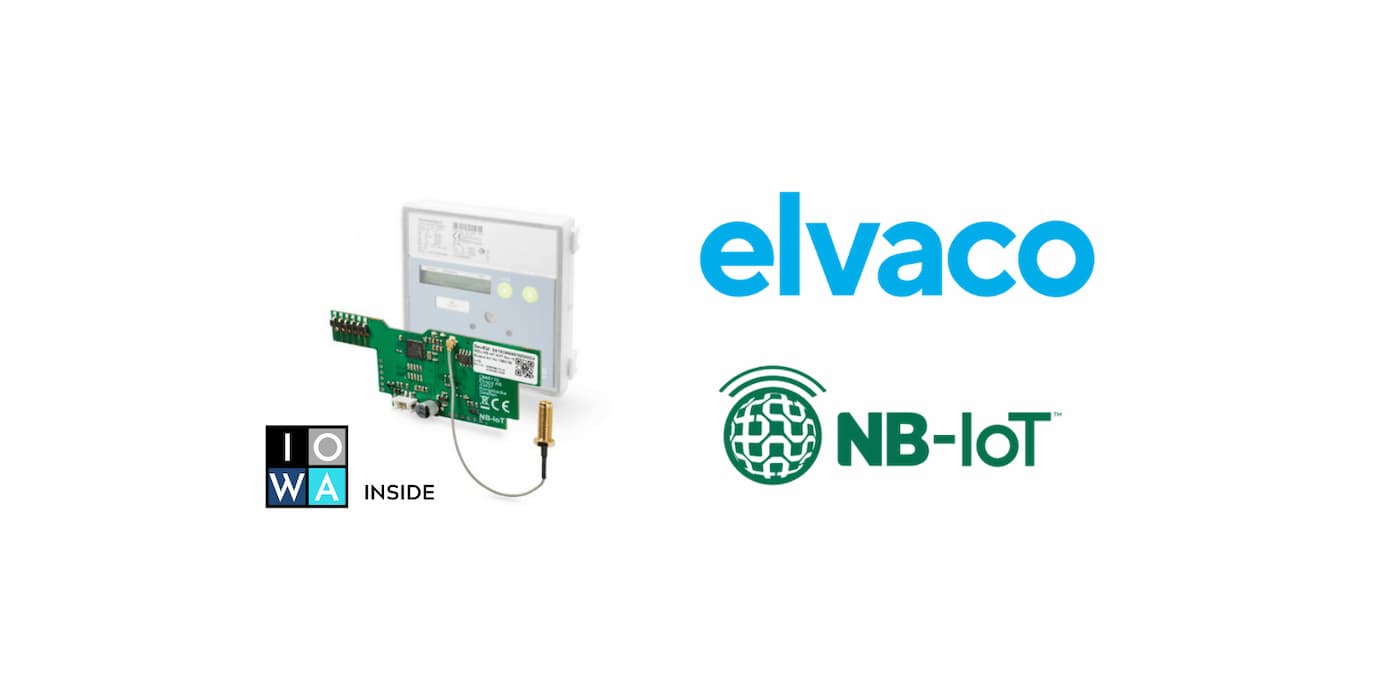From Connecting People to Connecting Everything: IoTerop's Founding Story
Based in Montpellier, France, IoTerop was started in 2016 by co-founders Jacques Bourhis, David Navarro, and Hatem Oueslati to overcome the challenges facing massive IoT adoption. Today, IoTerop is a multinational firm extending its reach as far as the U.S. and Australia. This is the company’s story.
In the late 1990s the smartphone was still a concept yet to be fully mapped out, but companies like Scandinavia’s Nokia and Ericsson, and U.S. personal digital assistant (PDA) maker Palm, realized the future was in a device that combined mobile phone and PDA into one. It was this work that first brought together the co-founders of IoTerop. They all worked for PalmSource - a developer of an operating system (OS) for Palm PDAs. Jacques Bourhis was working on the software architecture, David Navarro on managing the connection to the Internet, and Hatem Oueslati on other parts of the software stack, including SMS.
Then, in 2005, PalmSource was acquired by ACCESS Company, a Tokyo-based firm specializing in Internet access technologies. The new company continued to develop the Palm OS smartphone software stack. The experience Bourhis, Navarro, and Oueslati gained with PalmSource and ACCESS about connecting mobile phones to the Internet would prove invaluable when it later came to connecting other things to the network. Moreover, IoTerop’s co-founders learned how to build software stacks for devices with modest microprocessors and memory resources. That was something else that was also to prove very valuable later.
The Emergence of Device Management
A few years later, ACCESS ended its interest in smartphone software and sold its Montpellier interests to Intel, the U.S. headquartered firm and manufacturer of microprocessors and graphics processing chips, among other products. Navarro’s role at Intel became focused on device management (DM), which was essential if millions of mobile devices are to seamlessly connect to the Internet through the cellular network.
Navarro’s work brought him into close association with the Open Mobile Alliance (OMA) Device Management (DM) working group. OMA DM was working on a DM standard for mobile device provisioning, configuration, upgrades, and fault management. “I was effectively involved on OMA DM 2.0 for mobile devices from the very start,” says Navarro, now IoTerop’s CIO.

Bourhis entered a senior management role with Intel, eventually supervising the entire Montpellier site. But he also stayed close to the engineering work – particularly that associated with wireless technologies. Oueslati’s role at Intel was to think about how to connect other things apart from mobile phones to the Internet, particularly machines. Machine-to-Machine (M2M) connectivity was becoming important to increase automation and productivity. Oueslati and others started to consider that if machines can be connected to the Internet, so could other “things.” The phrase “Internet of Things,” while first being coined back in 1999, was just starting to gain traction.
“The three of us thought ‘Wow, all these small devices are going to need to connect to the Internet,’” says Oueslati, now IoTerop’s CEO. “Then we realized that the engineering challenges in doing that were the same as those for the mobile devices we’d worked with over the last 20 years. And we could see this was going to be a huge opportunity because it was likely billions of ‘things’ would be connected to the Internet.”
The Birth of LwM2M
Navarro’s work with collaborators at OMA resulted in an M2M and IoT DM standard called Lightweight M2M (LwM2M). While LwM2M is based on the concepts of DM for mobile devices, it does not use the same technology. Instead, DM software was designed from the ground up to suit resource constrained IoT products. OMA published a first official version of the standard in 2014.
Bourhis and Oueslati worked out what kind of promotion would be needed to support the adoption of LwM2M, and decided that an open source implementation would be the best approach. Together with Oueslati, Navarro wrote around 80% of the first open source LwM2M’s code. Nearly a decade after its introduction, LwM2M has become an interoperable industry standard for large-scale IoT device management.
Founding IoTerop
Despite the potential, commercializing M2M DM wasn’t a strategic objective for Intel, and in 2015 the company closed the Montpellier site. The exit of Intel combined with Bourhis, Navarro, and Oueslati’s shared passion for massive IoT DM was the incentive they needed to form a company to commercialize their LwM2M stack. “I knew we would work well together,” says Bourhis, now IoTerop’s CTO, “and our skills are complementary. David and Hatem had lots of experience with DM software, and I’m good at team management. All three of us clearly understood how important this was for massive IoT.”

IoTerop was created in 2016. “The company name derives from ‘IoT interoperability’,” says Navarro. “This interoperability has always been the true driving force for the company. And we knew the only way to guarantee interoperability is through standards.”
Bourhis, Navarro, and Oueslati took the open-source version of LwM2M and developed a stack that diverged from and enhanced the original version – while remaining based firmly on international standards. “From our smartphone experience we understood that massive IoT deployments were never going to happen without standards,” explains Oueslati. “We knew we had to work with standards if there was any chance of scaling the IoT to billions of nodes.”
The LwM2M stack is based on the TCP/IP suite. That makes it interoperable with other software based on IP standards - of which there are many forms. Examples include cellular IoT technologies such as LTE-M and NB-IoT. “The experience we gained from working with mobile OS software added to over a billion smartphones told us that software products that integrate easily into customer units quickly become popular,” explains Oueslati. “So we focused on that.”
From their experience at Intel, the co-founders of IoTerop also knew that commercialization demands things like software development kits [SDKs], documentation, and technical support. Such offerings fill the big gap between an open-source product and a commercial one that a customer can rely on. They also understood the importance of product development and things like product reviews. That knowledge was integrated into the new company’s working procedures.
A Bright Future
Seven years after its formation, IoTerop software is a key enabler for massive IoT. IOWA is a highly optimized commercial implementation of the LwM2M stack. It is certified to LwM2M specifications, and features a full implementation of LwM2M v1.0, 1.1, and 1.2 within its streamlined stack. ALASKA is IoTerop’s IoT device management platform and is equally adept at handling IoT device data as it is end-product supervision.
Customers such as Urban Control, a smart streetlighting company, have placed their trust in IoTerop. “There’s a big difference between dealing with a thousand IoT devices and a million,” says Miguel Lira, Innovation and Development Director at Urban Control. “That’s where the simplicity, scalability, security and future proofing of the standards-based ALASKA platform comes into its own.” And shipping container tracking company Traxens is managing its asset monitoring devices using IOWA. “[Commercial success] is about designing things to work in the real world. IoTerop with its IOWA stack has played a key role in helping us make that happen,” says Nazim Ben Abdesselam, Head of the IoT Development Team at Traxens.
But while IoTerop is making impressive inroads into the IoT DM market, there are still plenty of challenges ahead. One that’s taxing the company right now is educating a market that knows it needs the IoT and DM but isn’t quite sure why. “One of the hardest sales tasks [for our products] is that people don’t realize what they need and are still learning,” explains Oueslati. “That means we must be the teachers as well as providing the solution. And we must accept that potential customers might try a different solution first before realizing IoTerop is the best answer for them.”
Bourhis, Navarro, and Oueslati have played a key role in establishing the smartphone as the platform that keeps us all connected. Billions of mobiles show that the engineering decisions made twenty years ago were the right ones. Now the same strategy is set to ensure that not just humans, but everything will be connected. IoTerop is already a leading developer and supplier of the technology that underpins the IoT. Tomorrow, the impact of the IoT will dwarf any technology that’s gone before. The company’s future looks very bright indeed.


Customer Case Study: Shipping Container TrackingTraxens, a global shipping container tracking company, developed a battery-powered “fix and forget” tracker that is installed on hundreds of thousands of containers using IoTerop's IOWA. Read more |
Customer Case Study: Managing Smart Street LightsUrban Control, an outdoor smart solutions provider, needed a way to manage their LwM2M devices on a massive scale and offer interoperability to cities with their Urban Node 324. Read more |



